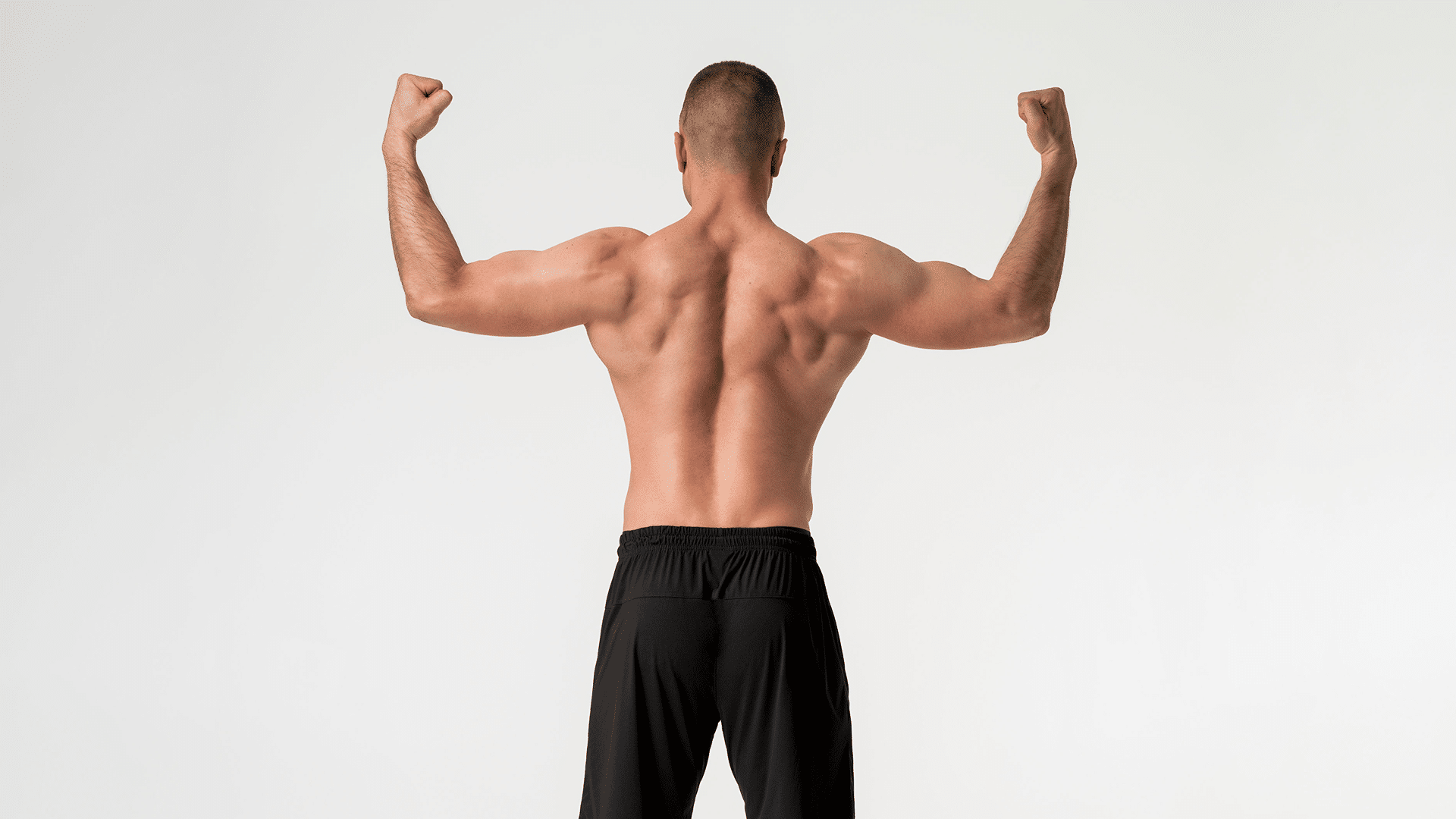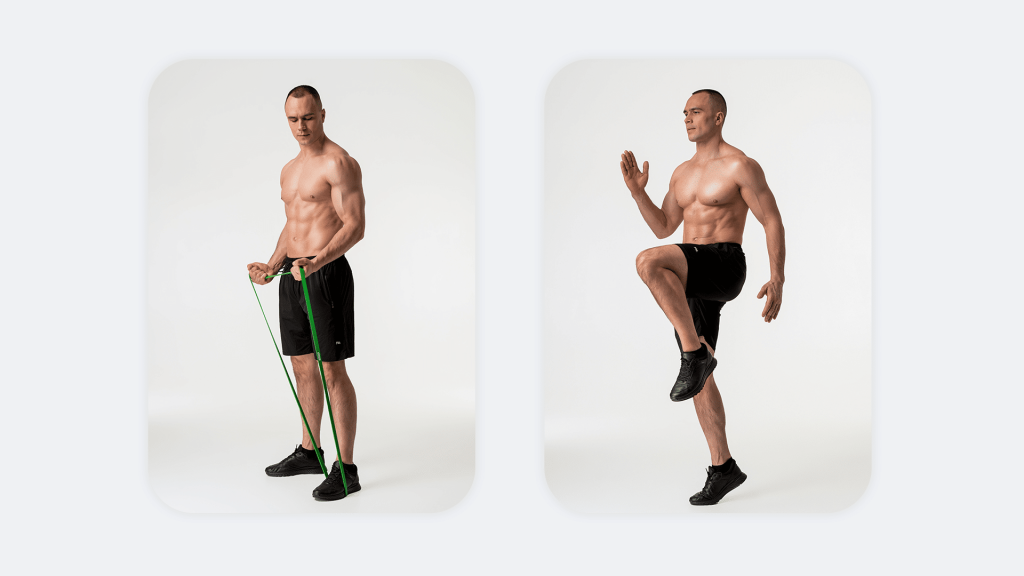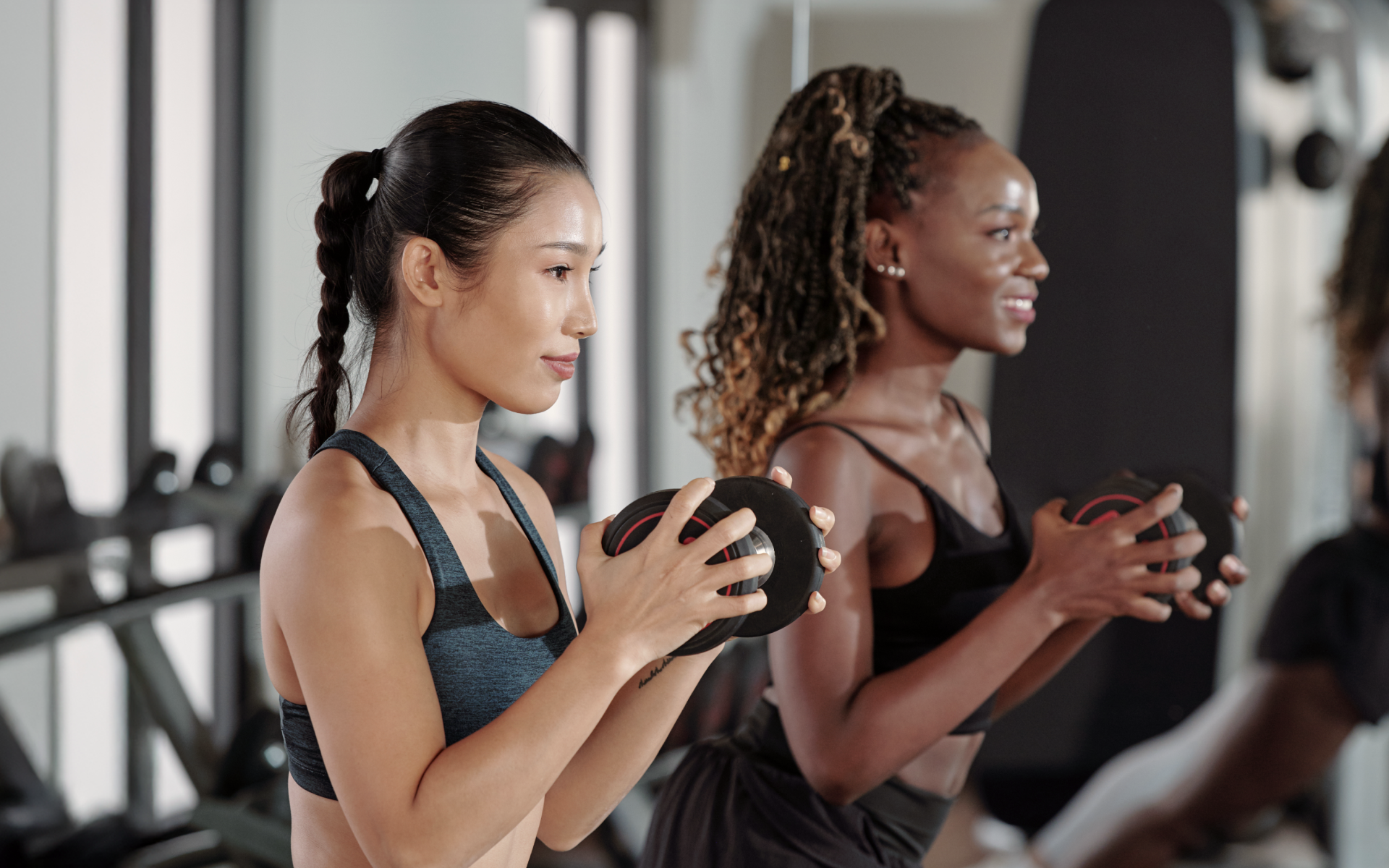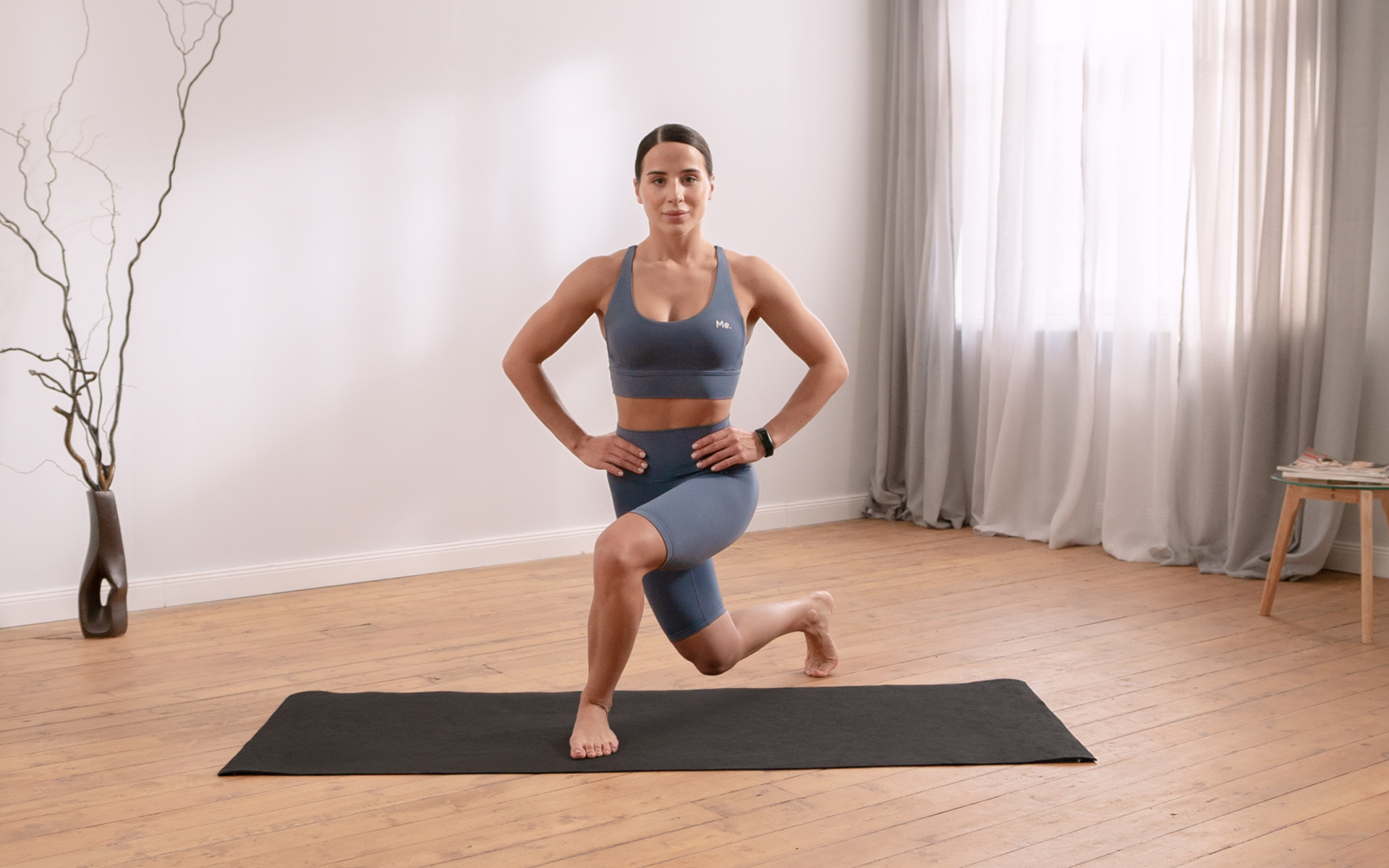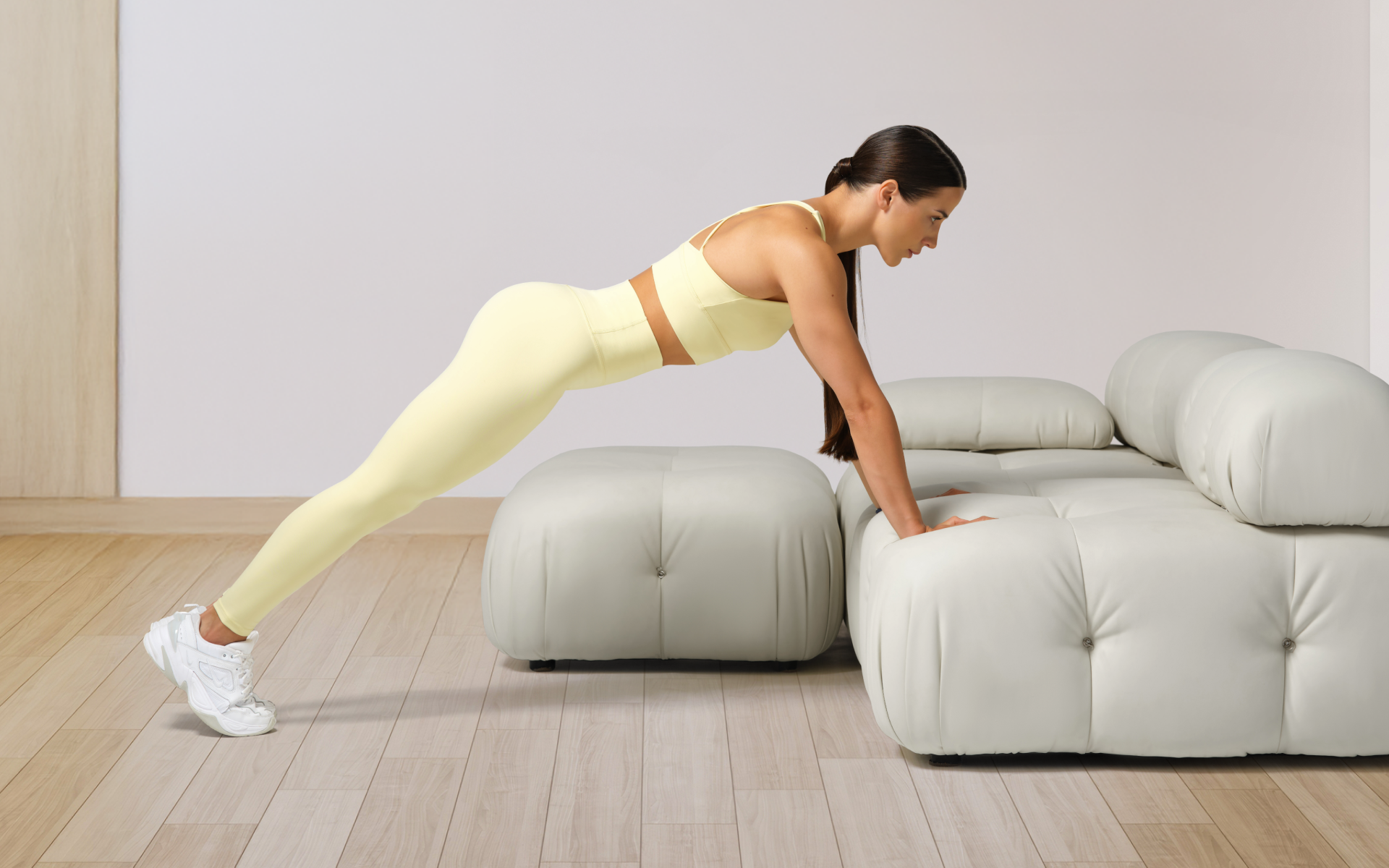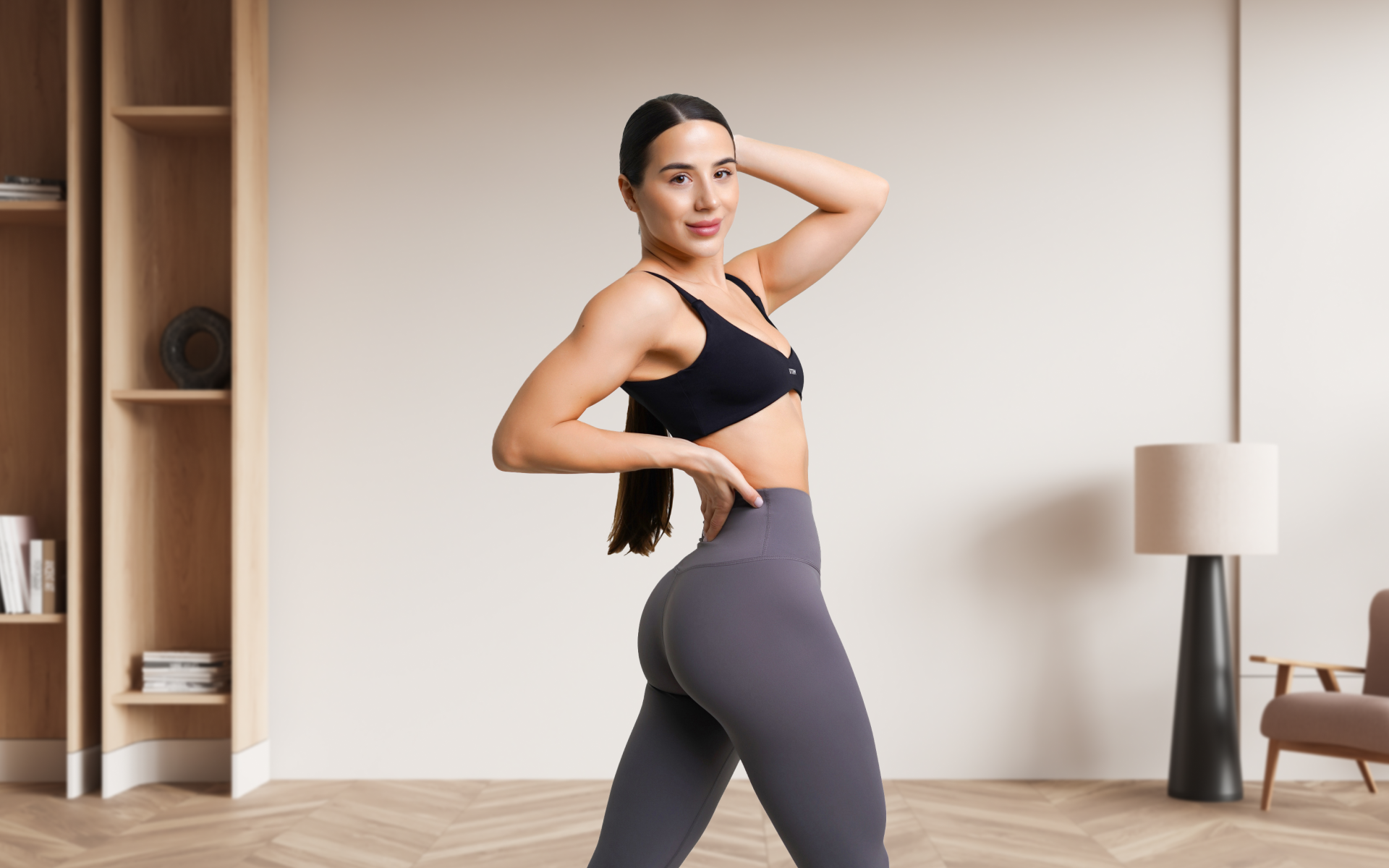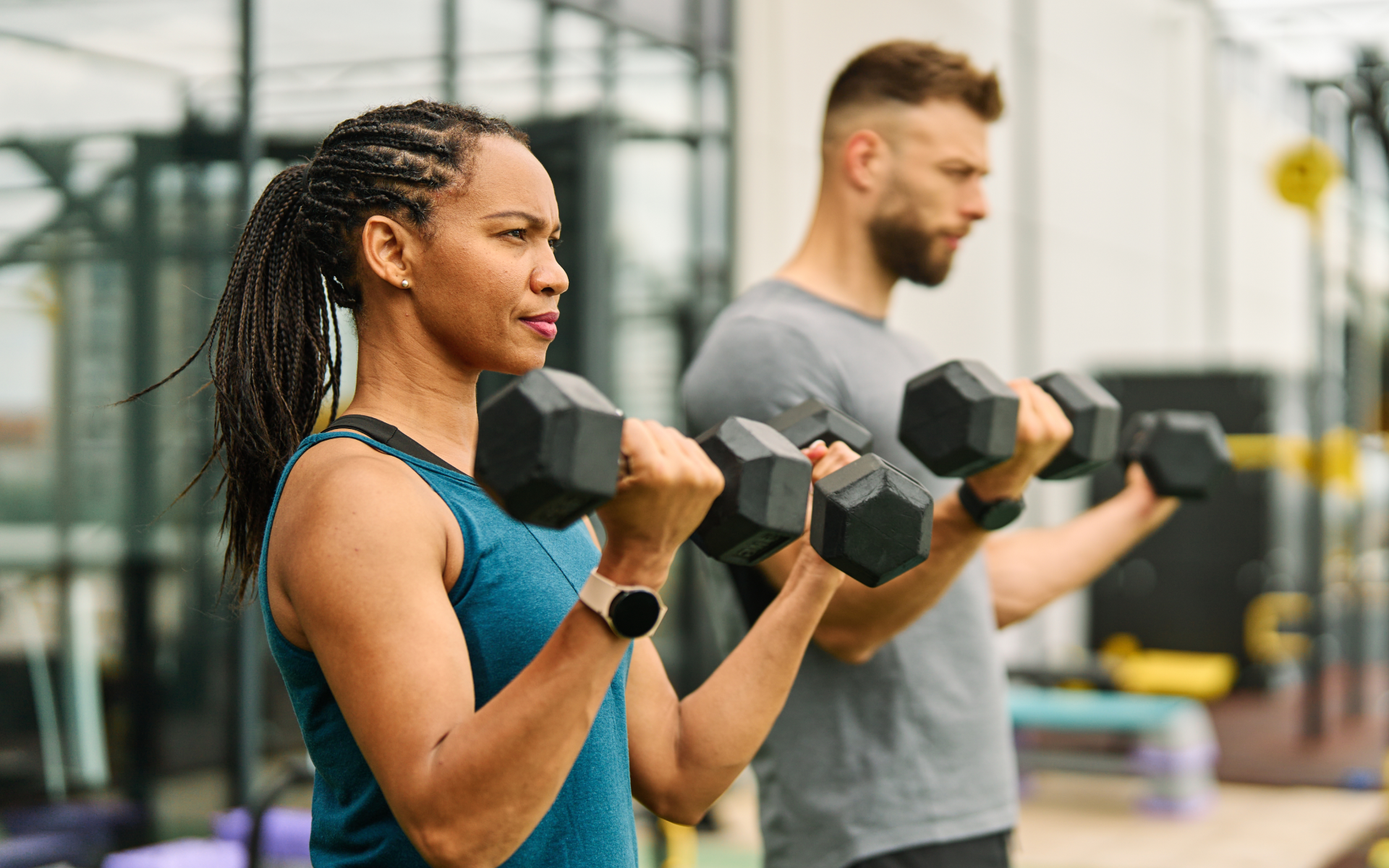The triceps are an important, yet often overlooked part of our body’s strength and aesthetics. These muscles, which are located at the back of the upper arm, play a crucial role in both pushing and pulling movements, and make a significant contribution to overall upper-body power.
However, despite their importance, the triceps are often neglected in favor of more “showy” muscles such as the biceps. But with the right approach, calisthenics tricep exercises can provide a highly effective workout for this muscle group, which can lead to marked improvements in both arm strength and definition.
This article will guide you through a series of unique tricep exercises that are designed to target the triceps specifically.
From dips and push-ups to more advanced maneuvers, these workouts will enhance your tricep strength and appearance while also contributing to better posture, improved performance in other sports and activities, and a reduced risk of injury.
Can You Build Triceps With Calisthenics?
Yes, you can indeed build your triceps using a calisthenics chest and triceps workout.
Calisthenics is a form of exercise that uses the weight of the body to build muscle (3). It’s a versatile and accessible way of working out as it requires little to no equipment and can be done practically anywhere.
Before we dive into the exercises, it’s important to have a full understanding of what the triceps actually are.
The triceps brachii is a three-part muscle on the back of the upper arm that is responsible for extending the elbow joint and straightening the arm.
As its name suggests, the triceps brachiiis a three-headed muscle. It consists of the long head, the lateral head, and the medial head.
Each of these heads originates at a different point on the scapula or humerus before converging into a single tendon that inserts onto the olecranon process of the ulna, which is the bony prominence of the elbow.
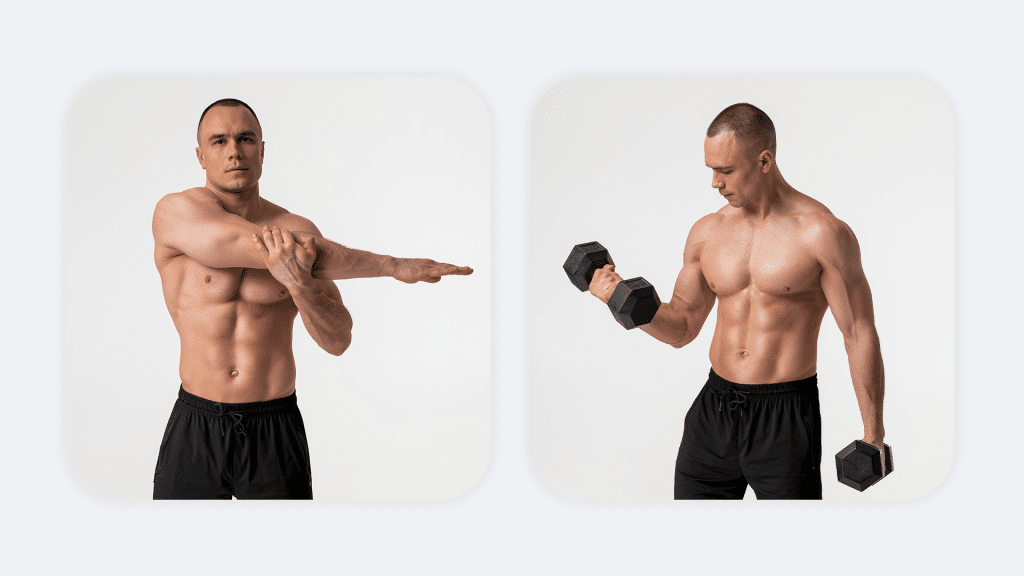
Each head of the triceps plays a specific role in arm movement. The long head plays a major role in the adduction and extension of the arm at the shoulder joint due to its origin point. At the same time, the lateral and medial heads are involved more in the extension of the forearm at the elbow joint.
In addition to these primary movements, the triceps also plays a crucial role in stabilizing the shoulder joint and assisting in movements such as pushing and pulling. When you push a door open or perform a push-up, your triceps are hard at work.
Strength in the triceps is also essential for activities that require forceful and quick elbow extensions, including throwing a ball or swinging a racket.
BetterMe is your fast-track ticket to a long-lasting weight loss! Tailor your fitness journey and maximize your results with just a couple of swipes!
How Do You Hit All Tricep Heads With Calisthenics?
Hitting all the tricep heads with a calisthenics tricep workout using no equipment involves performing a combination of bodyweight tricep exercises targeting each part of the muscle.
Diamond push-ups and dips primarily target the lateral and medial heads, whereas overhead exercises such as the overhead tricep extension engage the long head of the triceps.
By incorporating a variety of these exercises into your workout, you can ensure a comprehensive and balanced approach to tricep development.
In the following sections, we will take a closer look at some of the best calisthenics tricep exercises.
Close Grip Push-ups
The classic push-up is one of the most effective triceps exercises that requires no equipment. By positioning your hands closer together, you can place more emphasis on the triceps. Close grip push-ups are particularly effective for tricep development due to the muscle activation that is demanded by the hand placement.
If you narrow the distance between your hands in a push-up position, the degree to which your triceps need to engage to lift and lower your body is increased. This intense activation can result in significant strength and muscle growth over time.
Here’s how to perform close grip push-ups:
- Start in a high plank position with your palms flat on the floor, hands shoulder-width apart, and shoulders stacked directly above your wrists
- Move your hands closer together so your thumbs touch, forming a triangle shape between your hands
- Engage your core and make sure your body is in a straight line from head to heels
- Lower your body toward the ground, ensuring your elbows are tucked close to your body as you descend
- Push your body up, extending your arms to return to the initial position, and make sure to keep your body straight and your core engaged throughout the movement
- Repeat this movement for your desired number of reps – remember that form is more important than quantity, and it’s better to perform fewer reps correctly than many reps with poor form
- Modify the exercise as needed – if you find the traditional close grip push-up to be too challenging, the exercise can be modified by dropping to your knees or performing the push-ups against a wall
Tricep Dips
Dips are an excellent back and tricep workout as they force the triceps to lift the entire weight of the body, placing significant tension on the muscle, which causes it to grow.
This exercise allows for a substantial range of motion, stimulating more muscle fibers in the triceps, which leads to increased strength and size over time. Dips can be performed on parallel bars, but a bench or a sturdy chair can also be used.
To perform dips, you should follow these steps:
- Position yourself between the dip bars or on the edge of a bench or chair, grasping the bars or edge securely with your hands
- With your legs hanging freely and your body upright, use your arms to push your body upward until your arms are fully extended, but not locked
- Lower your body by bending your arms, allowing your body to dip down until your upper arms are parallel to the floor or slightly lower
- Push your body back up to the initial position, focusing on using your triceps to lift your body
- Repeat this movement for the desired number of reps, ensuring you keep your form solid and your movements controlled
Read more: Calisthenics Arm Workouts: Build Massive Arms Without The Gym.
Diamond Push-ups
Diamond push-ups are a high-intensity exercise and one of the best tricep exercises. They also work your chest and shoulder muscles. Due to the diamond-like hand placement, this exercise shifts more of the load onto the triceps brachii.
As you perform the push-up, your triceps work against the resistance your body weight provides, which leads to muscle development over time.
This exercise also requires a significant amount of shoulder and core stability, which makes it a comprehensive upper-body workout. Diamond push-ups can enhance overall upper-body strength, improve muscle definition, and contribute to better performance in other exercises and physical tasks.
To perform diamond push-ups, you should follow these steps:
- Start in a high plank position with your palms flat on the floor, hands shoulder-width apart, and shoulders stacked directly above your wrists
- Bring your hands together beneath your chest so that your thumbs and index fingers form a diamond shape
- Engage your core and ensure your body forms a straight line from head to heels
- Lower your body toward the ground, keeping your elbows close to your body as you descend – you should aim to touch your chest to your hands or get as low as possible without compromising form
- Push your body back up to the initial position by fully extending your arms, ensuring you keep your body straight and your core engaged
Isometric Holds
Isometric holds can be an effective way of targeting the triceps. In this type of exercise, you maintain a static position for a certain period, thereby exerting continuous tension on a particular muscle group.
One of the significant benefits of isometric holds is they can help increase muscle endurance as they require the muscle to contract for a longer time than typical concentric or eccentric movements (1). This prolonged contraction helps the triceps become more resilient to fatigue over time.
Isometric holds target the triceps in several ways. For example, consider the plank exercise. Although primarily engaged in strengthening the core, the triceps also play a vital role in maintaining the extended position of the arm, resisting the pull of gravity.
The static nature of the plank requires the triceps to continually engage and contract to keep the body in the correct alignment.
Here’s how to perform a plank:
- Start by positioning yourself on the floor, facing downwards. Place your palms flat and directly beneath your shoulders, slightly wider than shoulder-width apart.
- Extend your legs behind you, tucking your toes underneath. Your body should form a straight line from head to heels.
- Engage your core and ensure your body remains in a straight line, preventing your hips from sagging or rising too high.
- Pay attention to your arm position: extend your arms fully, with your elbows locked. This position engages your triceps as they work to keep your arms straight under the weight of your body.
- Maintain this position for as long as possible, ensuring your form remains solid. Your gaze should be towards the floor to maintain a neutral neck position.
- To increase the intensity and further engage your triceps, you can shift your weight forward slightly so your shoulders are slightly ahead of your wrists.
- Relax and drop to your knees to rest once you’ve held the plank for your desired duration. Repeat the exercise for the chosen number of reps.
Remember, the key to effective planks, particularly when targeting the triceps, is maintaining the correct form throughout the exercise. Improper technique can cause less activation of the desired muscle group and potential injury.
Therefore, it’s better to hold a proper plank for a shorter time than an improper one for longer periods.
Triceps Extensions
Tricep extensions are a tried and tested method of isolating and training the triceps muscles. This exercise can be performed standing or seated, using a dumbbell or a bar, or even a cable machine, but the basic mechanics remain the same.
A bodyweight version of this exercise can be done using your own body weight as resistance, which is the principle of calisthenics.
In the context of calisthenics, a bodyweight triceps extension can be performed using a sturdy table, a railing, or on the floor.
The technique involves leaning forward, placing your hands on the surface, bending your elbows to lower your body while keeping your elbows close to your body, and extending your arms to push your body back up.
The movement targets the triceps specifically, which makes it a great addition to any calisthenics workout that focuses on arm strength and definition.
Bodyweight triceps extensions are performed as follows:
- Begin by finding a sturdy surface, such as a table, a railing, or a wall bar at chest height. If you’re a beginner or you require a less intense version, a higher surface (such as a kitchen counter) works well.
- Stand facing the surface. Place your hands on the surface, slightly narrower than shoulder-width apart, and step your feet back until your body forms a straight line from head to heels.
- Engage your core to ensure a straight body line is maintained. Ensure your shoulders are directly over your hands and your gaze is toward the floor to keep your neck aligned.
- Bend your elbows to lower your body toward the surface. Keep your elbows close to your body and do not allow them to flare out to the sides. Your forearms should be perpendicular to the floor in the lowered position.
- Lower your body until your elbows form a 90-degree angle or until your upper arms are parallel to the surface. It is important to remember that the goal is to get as low as possible without compromising your form.
- From the bottom of the movement, push your body back up by fully extending your arms. Keep your elbows close to your body as you ascend. Make sure to drive the movement from your triceps, rather than the chest or shoulders.
- Repeat this exercise for the desired number of reps, ensuring to keep your form solid and your movements controlled.
Intense sweat sessions, working weight loss tips, lip-smacking recipes come in one package with the BetterMe app. And all of it is at your fingertips, start transforming your life now!
How Do You Train Triceps With Bodyweight?
Training triceps with bodyweight can be accomplished through a variety of exercises that specifically target this muscle group.
However, the key to muscle growth is progressive overload – gradually increasing the amount of stress that is placed on the body during exercise.
Progressive overload isn’t simply about doing more reps or sets, it also involves other variables including intensity, volume, and frequency (2). Here are some specific strategies you can use to progressively overload your triceps:
- Increase Resistance: As your strength builds, you can use more body weight in each exercise, such as by elevating your feet in push-ups or using a weighted vest.
- Increase Volume: Do more sets or reps of each exercise. If you usually do three sets of 10 push-ups, try four sets, or aim for 12 reps per set.
- Increase Frequency: Add more workouts to your routine. If you normally train your triceps twice a week, consider adding a third session.
- Decrease Rest Time: Shortening the rest period between sets or exercises will increase the intensity of your workout, which forces your muscles to work harder and become stronger.
- Increase Range of Motion: Perform exercises through a full range of motion to increase the stress on your triceps. For example, go deeper in your dips or push-ups.
- Variation: Mixing up your routine can challenge your muscles in new ways. Try different exercises, grips, or tempos.
Remember that the key principle is gradual progression. Don’t rush into making big jumps in volume or intensity, as this can result in injuries. Start small and build up steadily to give your triceps time to adapt and grow.
Is It Ok To Do Both Calisthenics and Gym To Grow Triceps?
It’s not only okay, it can actually be highly beneficial to incorporate both calisthenics and gym workouts into your routine for triceps growth. By combining the two, you can take advantage of the unique benefits each has to offer.
Both calisthenics and weightlifting can contribute to muscle growth, strength, and endurance, and they complement each other well when used together as parts of a balanced fitness regimen. Just ensure that you give your body sufficient time to rest and recover to avoid overtraining.
Read more: The Ultimate Calisthenics List Of Exercises For Every Level.
Frequently Asked Questions
Can you get bigger arms with calisthenics?
Yes, you can get bigger arms with calisthenics. Exercises such as push-ups, pull-ups, and dips are effective for building strength and size in your arms, including the biceps and triceps.
Is it possible to build muscle with calisthenics?
It is absolutely possible to build muscle with calisthenics. Calisthenics exercises use body weight as resistance, which can effectively stimulate muscle growth when performed with consistent effort and progressive overload.
Does calisthenics make you lean or bulky?
Calisthenics can help you become leaner or bulkier, depending on your workout routine and nutrition. High repetition workouts with a balanced diet can result in a lean, toned physique. If you want to get bulkier, you must progressively increase the intensity of your workouts and consume a calorie surplus to support muscle growth.
The Bottom Line
Calisthenics is a fantastic method for training the triceps. The body weight exercises that are involved in calisthenics directly target the triceps, stimulating growth and strength increase without the need for any sophisticated gym equipment.
DISCLAIMER:
This article is intended for general informational purposes only and does not serve to address individual circumstances. It is not a substitute for professional advice or help and should not be relied on for making any kind of decision-making. Any action taken as a direct or indirect result of the information in this article is entirely at your own risk and is your sole responsibility.
BetterMe, its content staff, and its medical advisors accept no responsibility for inaccuracies, errors, misstatements, inconsistencies, or omissions and specifically disclaim any liability, loss or risk, personal, professional or otherwise, which may be incurred as a consequence, directly or indirectly, of the use and/or application of any content.
You should always seek the advice of your physician or other qualified health provider with any questions you may have regarding a medical condition or your specific situation. Never disregard professional medical advice or delay seeking it because of BetterMe content. If you suspect or think you may have a medical emergency, call your doctor.
SOURCES:
- Brief Review: Effects of Isometric Strength Training on Strength and Dynamic Performance (2019,nih.gov)
- Progression of volume load and muscular adaptation during resistance exercise (2010,nih.gov)
- The advantages of body-weight exercise (2022,harvard.edu)
